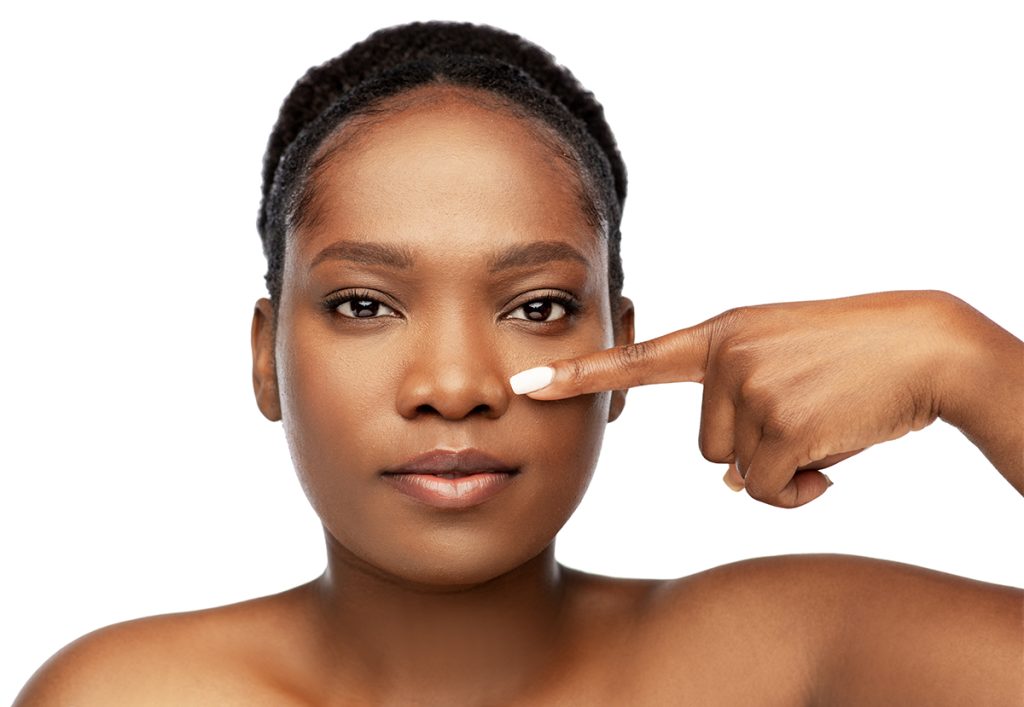4 Minute Read:
Your nose is the central feature of your face, and its appearance can throw your facial profile off balance. Many people are unhappy with their noses, which is why rhinoplasty, or nose surgery, is one of the most popular facial plastic surgeries. Rhinoplasty is also one of the most technical procedures as it involves cartilage, bone, skin and other tissues that must account for your ethnic characteristics.
Rhinoplasty requires a skilled and experienced plastic surgeon, such as Dr. Shahriar Mabourakh. Our double-board-certified plastic surgeon understands the nuances of this procedure and customizes the surgical approach to bring harmony to your face while preserving your inherited traits.

How Ethnic Nose Surgery Is Different From the Common Approach
For many years the best surgical practices for rhinoplasty were based on the cosmetic standards and facial shape of Caucasian people. However, this one-size-fits-all approach doesn’t consider the diverse facial contours of people of color. Many people of Middle Eastern, Native American, Asian or African descent end up with unsatisfactory rhinoplasty results if their surgeon doesn’t account for and preserve their unique attributes. Some people of color require revisional rhinoplasty (a secondary procedure) to address breathing issues or poor results from their initial nose surgery.
Various ethnicities may be more prone to a bulbous tip, wide or humped bridge, broad or flat nasal tip or breathing problems caused by a deviated septum or drooping nasal tip. Dr. Mabourakh considers your entire facial anatomy and ethnicity when he designs a surgical approach for rhinoplasty. The goal is a harmonious nose shape and size that balances your other facial features.
Types of Ethnic Rhinoplasty
Ethnic rhinoplasty may involve one or more of these surgical techniques:
Nose Augmentation
This surgical approach involves minor changes to the angle of the nose to improve and balance the size and shape with other facial features. Cartilage is rearranged to create softer lines or add definition around the nostrils and bridge to make the tip of the nose appear narrower. The nasal tip may be rotated upward or downward to increase or shorten the distance from the upper lip. These changes can minimize a prominent nasal bridge.
Nose Reduction
A large nose that overpowers your facial appearance and profile can be reduced by removing some cartilage and bone from the nose. Removing some of these underlying structures softens the nose’s appearance, so it protrudes less. This surgical technique is often necessary for Middle Eastern patients.
Enhancing Nose Projection
Dr. Mabourakh may recommend enlarging parts of the nose with a cartilage graft taken from the septum or another area to enhance the flat areas of the nose. This grafting technique increases the nose’s projection for a more balanced facial appearance and prominent facial profile. This ethnic rhinoplasty technique may be recommended for Asian, Native American, Hispanic, Pacific Islander or African-American patients.
When Is Revision Rhinoplasty Recommended?
Patients with poor results from their initial rhinoplasty may need a revision rhinoplasty to correct cosmetic or functional problems caused by the first procedure. Some people of color experience breathing issues along with unsatisfactory results, and revision rhinoplasty works to address these concerns.
Revision rhinoplasty is more complex than nose surgery because scar tissue has formed from the first procedure. Dr. Mabourakh has ample experience in ethnic rhinoplasty and revisional nose surgery and can improve the appearance and function of your nose with a customized surgical technique that considers your ethnicity and facial harmony.
Contact Folsom Plastic Surgery to schedule a one-on-one consultation with Dr. Mabourakh to discuss ethnic rhinoplasty or revisional rhinoplasty. Call our Folsom, California, office at (916) 984-8585 or Stockton, California, office at (209) 464-5656.


